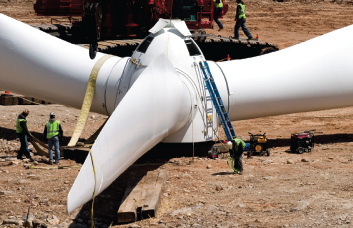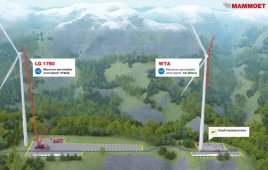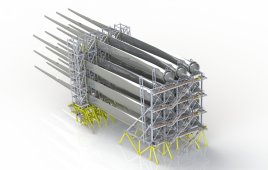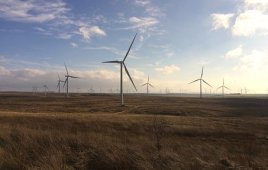General contractors: These companies run the construction show. They schedule the crews and equipment, build the roads and foundations, erect the turbines, and conduct the turbine commissioning, a sort of final inspection before the turbines are turned over to their owner.
Wind farms are considerably different from general road and construction jobs because so much is influenced by their remoteness, large and complex schedules, and the power purchase agreements, a contract that wind-farm owners have with a utility that will purchase their power for an agreed-on cost.
Most construction costs come from roads because wind farms are generally located in isolated places without infrastructure, such as roads or powertransmission lines. A recent article on construction change orders highlights a range of tasks involved in wind farm construction.
Change orders are often requests subcontractors present to site developers because of unanticipated conditions, usually in the soil or scheduling. The general impression is that change orders are from oversights or embarrassing mistakes. But that is not always the case. Change orders can be good for a wind project because they may lead to lower costs. Change orders merely deal with unanticipated situations.
There are many reasons for change orders, but those familiar with them say change orders come from: Roads, because they cover a large part of the construction work in wind projects. A turbine site might occupy only a quarter acre, but there can be many miles of roads for construction access and permanent use. Scheduling errors: Late delivery of turbines due to new facilities and technology was sited by one construction VP. Contractors should have a successful record of BOP, Balance of Plant — everything but the turbines. Obviously, delayed turbines have a significant impact on the construction schedule. A new turbine design shipped a long distance can also affect delivery in a bad way.
State DOTs: Each state department of transportation has different rules on width, length, and divisible loads. Some states, for instance, let trucks piggyback two components, two blades, or a blade and a hub. Other states insist that if such a load can be divided, it must be divided into two. What’s more, truck loads may be fine when they leave the factory. But when they come to a border, they may have to go far east before heading west because a state with more direct route insists the truck isn’t loaded properly.
Owners trying to get their power to market quickly do what they can to limit the capital put forth in early design stages. They must put enough capital up front to acquire the purchase agreement (PPA), and to do that they must move forward to final construction stages. But most planning for the pro forma is done off of limited engineering, according to one manufacturer familiar with construction. For instance an owner may only take the project up to 60% of engineering design to secure the PPA because that gives the project financial legs. That PPA comes with a hard date to get the project grid connected.
Contracts: A lot of what goes into a contract is the allocation of risk. A tower foundation provides a simple example. A contractor may assume in its bid price that the foundations will be built in good soil based on the owner’s soil report. If the contractor starts work and finds something not shown in that report – say, hard rock, which is more expensive to deal with – that will call for a different foundation and a redesign. If a contract makes the contractor responsible for these extra costs, it will reasonably increase its bid price to cover the risk of encountering rock, and keep the difference if rock is not encountered. However, when the contractor knows it will get a change order if it runs into rock, it will price the foundations for the less expensive work and the owner will only pay the extra costs if and when the foundations hit rock. This results in a fairer price and more efficient construction work.
Filed Under: Construction





